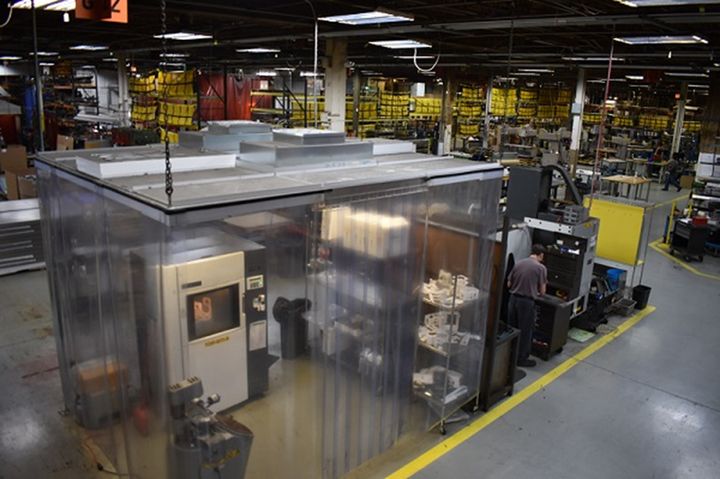
A cleanroom on the shop floor with a protected AM printer [Source: The Fabricator]
There is currently an acute shortage of qualified machinists, which in our view is something the 3D printing industry should be concerned about.
Machine shops are important customers for 3D printers and to a machine shop owner, a 3D printer is essentially another machine tool.
If a shop can’t find machinists, it will be less inclined to purchase more machines, including 3D printers. The current machinist shortage is even more disturbing since it is occurring even before the economy fully recovers and while the aerospace industry is still hobbled. When companies need to turn work down due to labor insufficiencies, there is a problem.
Richard Tobin, Chief Executive of Dover Corp, which makes refrigerators for supermarkets and pumps for gas stations, describes the severity of the problem this way, in a May 3rd, 2021 Wall Street Journal article:
“Clearly, at the assembly level, labor availability is becoming a problem, and that is beginning to start to move up labor costs over time.”
If that is the case, what are some possible solutions?
- More apprentice programs, student co-ops and workforce training
- Educating students and jobseekers about the industry’s careers opportunities
- Upgrading to multi-axis and multi-function machines that can handle more work with fewer operators
- A merger of staff-constrained shops into larger-resource shops, including vertical integration into larger manufacturers
- Increased 3D printer generative design and topology to reduce the number of separate components needing machining
- Outsourcing some production activities to service bureaus
- Increased automation
- Getting more women involved in the industry
- Creating new artisan design positions where designers can also fabricate
The Research & Development Tax Credit
Whether it’s used for creating and testing prototypes or for final production, 3D printing is a great indicator that R&D Credit eligible activities are taking place. Companies implementing this technology at any point should consider taking advantage of R&D Tax Credits.
Enacted in 1981, the now permanent Federal Research and Development (R&D) Tax Credit allows a credit that typically ranges from 4%-7% of eligible spending for new and improved products and processes. Qualified research must meet the following four criteria:
- Must be technological in nature
- Must be a component of the taxpayer’s business
- Must represent R&D in the experimental sense and generally includes all such costs related to the development or improvement of a product or process
- Must eliminate uncertainty through a process of experimentation that considers one or more alternatives
Eligible costs include U.S. employee wages, cost of supplies consumed in the R&D process, cost of pre-production testing, U.S. contract research expenses, and certain costs associated with developing a patent.
On December 18, 2015, President Obama signed the PATH Act, making the R&D Tax Credit permanent. Since 2016, the R&D credit has been used to offset Alternative Minimum Tax (AMT) for companies with revenue below $50MM and, startup businesses can obtain up to $250,000 per year in payroll tax cash rebates.
Conclusion
Like many major problems, the solutions to the machinist shortage may require multiple alternatives. The first step towards solving a problem is to identify the problem then consider one’s options.
